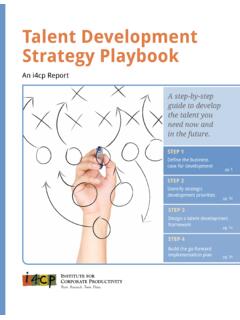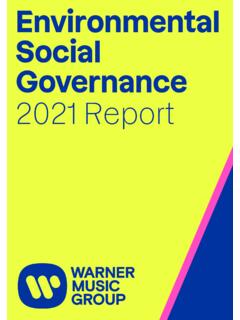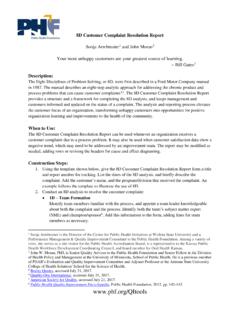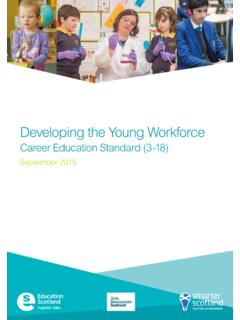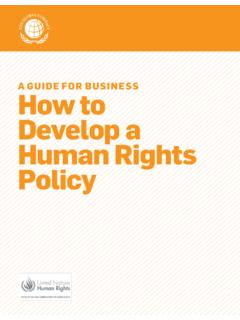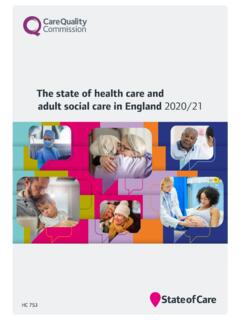Transcription of The Government Response to the Health and Social Care ...
1 The Government Response to the Health and Social Care Committee report on workforce Burnout and Resilience in the NHS and Social Care Presented to Parliament by the Secretary of State for Health and Social Care by Command of Her Majesty February 2022 CP 620 The Government Response to the Health and Social Care Committee report on workforce Burnout and Resilience in the NHS and Social Care Presented to Parliament by the Secretary of State for Health and Social Care by Command of Her Majesty February 2022 CP 620 Crown copyright 2022 This publication is licensed under the terms of the Open Government Licence except where otherwise stated. To view this licence, visit Where we have identified any third-party copyright information you will need to obtain permission from the copyright holders concerned. This publication is available at Any enquiries regarding this publication should be sent to us at Department of Health and Social Care, 39 Victoria Street, London, SW1H 0EU.
2 ISBN 978-1-5286-3189-1 E02718076 02/22 Printed on paper containing 75% recycled fibre content minimum Printed in the UK by HH Associates Ltd. on behalf of the Controller of Her Majesty s Stationery Office. Contents .. 2 2. The scale and impact of workforce burnout .. 6 3. workforce Culture .. 11 4. The Impact of COVID-19 .. 17 5. workforce Planning .. 25 2 1. Introduction On 8 June 2021, the Health and Social Care Select Committee published its report workforce burnout and resilience in the NHS and Social Care . The committee s report explored several key issues, including: The scale and impact of workforce burnout and its contributing factors; The impact of workplace culture on burnout and the further work needed to create an inclusive and compassionate working environment that better supports staff in the Health and care sector; The unique impact that the COVID-19 pandemic has had on the workforce ; and How more comprehensive workforce planning is necessary to ensure the Health and care sector has the number of staff it needs both now and in the longer term.
3 The committee s inquiry was conducted against the backdrop of the COVID-19 pandemic, which has once again highlighted the commitment and dedication of the Health and care workforce . The Health and care system is what it is thanks only to the hard work of its staff, and as a Government , we are immensely grateful to them. Caring for people through this pandemic has required a phenomenal effort from so many people, from students and trainees to new recruits, established staff and those returning to the workforce . This has not just been doctors, nurses and care workers, but also Social workers, ambulance teams, cleaners, porters, mental Health teams, and all the diverse and varied parts of this incredible system. We know that the pressure on the workforce has been (and continues to be) extremely high, as noted by the committee and by many of those who gave evidence throughout the course of the enquiry.
4 Staff have worked long hours responding to the pressures in the system and have been unwavering in their care for patients and those in receipt of care. Whilst work to improve the wellbeing and day to day experiences of the workforce started well before the pandemic began, it has brought into sharp focus the huge importance of our work on staff wellbeing. As we recover, we will work with systems and providers to ensure a culture of staff Health and wellbeing is embedded across all organisations. As a Government , we 3 remain committed to providing the workforce with the Health and wellbeing support they need both now and in the longer term. It is also vital that we continue to learn from our experiences during COVID-19. The Health and care sector has been challenged on a scale and pace not previously seen and these pressures have encouraged the very best in teams.
5 Compassionate and inclusive leadership has been brought to the forefront and we have seen some great examples of innovation and excellence in practice. We should encourage the adoption of new practices that have worked well, to ensure the Health and care sector rebuilds in a way that is even better than before. However, the pandemic has also highlighted disparities in experience for some staff working in the Health and care system. In their report , the committee highlights the disproportionate impact the pandemic has had on staff from ethnic minority backgrounds and emphasised that the treatment of staff from ethnic minorities too often falls short from the high standards that all staff should rightfully expect. We recognise that more needs to be done to support leaders and teams to create an inclusive and compassionate workplace culture for everyone that works in the NHS.
6 We have increased the size of the NHS workforce over the last decade and this growth continues to be a key focus to ensure we meet the rise in demand for Health and care services. Ensuring the NHS is well staffed, with colleagues well looked after, to prevent pressures becoming too great, is a priority for this Government . Ongoing recruitment and workforce support will be central to continuing to manage the pandemic and supporting recovery in the NHS, as well as delivering the ambitions of the NHS Long Term Plan. Furthermore, the NHS People Plan includes a range of measures to overhaul recruitment and HR processes, tackle the disciplinary gap and give staff from ethnic minority groups a stronger voice in governance and decision making. Work is underway to ensure the CQC well led assessment framework places increased emphasis on whether organisations have made real and measurable progress on equality, diversity and inclusion.
7 The role of the workforce Race Equality Standard (WRES) is also being strengthened with Integrated Care Systems (ICS) and regions supported to develop robust and ambitious action plans based on 2020 WRES survey results. For Social care, we are working to further understand the disparities faced by different groups across the Social care workforce . A clearer understanding of the barriers and challenges will enable us to develop 4 more informed and inclusive approaches, drawing on personal experience and with measurable improvements and outcomes. We share the same ambitions as for the NHS workforce , though recognise it is a very different operating environment. Additionally, we recognise that the Social care workforce is critical to enabling the highest standards of care and support. We are listening to and engaging with frontline staff, sector leaders and our partners about how the Government can best support those who work in care, noting that Social care differs from the NHS in its delivery through local authorities and the private market.
8 On Tuesday 7 September, as part of the Government s Build Back Better: Plan for Health and Social Care , we announced an additional investment in Adult Social Care over the next three years, starting from April 2022. This will enable the start of a comprehensive programme of reform, a very important step. This includes at least 500m to fund a programme of work to professionalise and develop the workforce , including hundreds of thousands of training places and certifications for our care workers and professional development for regulated workforce . It will also fund mental Health wellbeing resources and access to occupational Health funding to help staff recover from their extraordinary role in helping the country through the pandemic. More detail is provided in the White Paper, People at the Heart of Care: Adult Social Care Reform , published 1st December 2021.
9 On 10 December 2021 we announced 300 million to support local authorities and care providers recruit and retain care staff through the winter. This funding is in addition to the existing million workforce Recruitment and Retention Fund (WRRF) which was announced on 21 October 2021. This ring-fenced funding will be allocated to LAs using the relative needs formula and will be available until the end of March 2022 to support local authorities working with providers to recruit and retain staff. We intend to issue the funding alongside grant conditions and guidance shortly. The Government has considered the committee s recommendations carefully in light of ongoing policy development and this is the Government s formal Response . The structure of this Command Paper directly corresponds to the recommendations in the Committee s report .
10 5 Where appropriate we have grouped recommendations and responded to these collectively. 6 2. The scale and impact of workforce burnout Recommendation 1: Understanding the scale and impact of workforce burnout can only be achieved with a metric for staff wellbeing and staff mental Health that covers both the NHS and Social care. We therefore recommend that the Department for Health and Social Care extends the NHS Staff Survey to cover the care sector. Recommendation 2: We further recommend that the NHS Staff Survey and any Social care equivalent includes an overall staff wellbeing measure, so that employers and national bodies can better understand staff wellbeing and take action based on that understanding. The Staff Survey already allocates a scale out of 10 for each theme it covers, which could provide the starting point for the calculation of such a measure.










